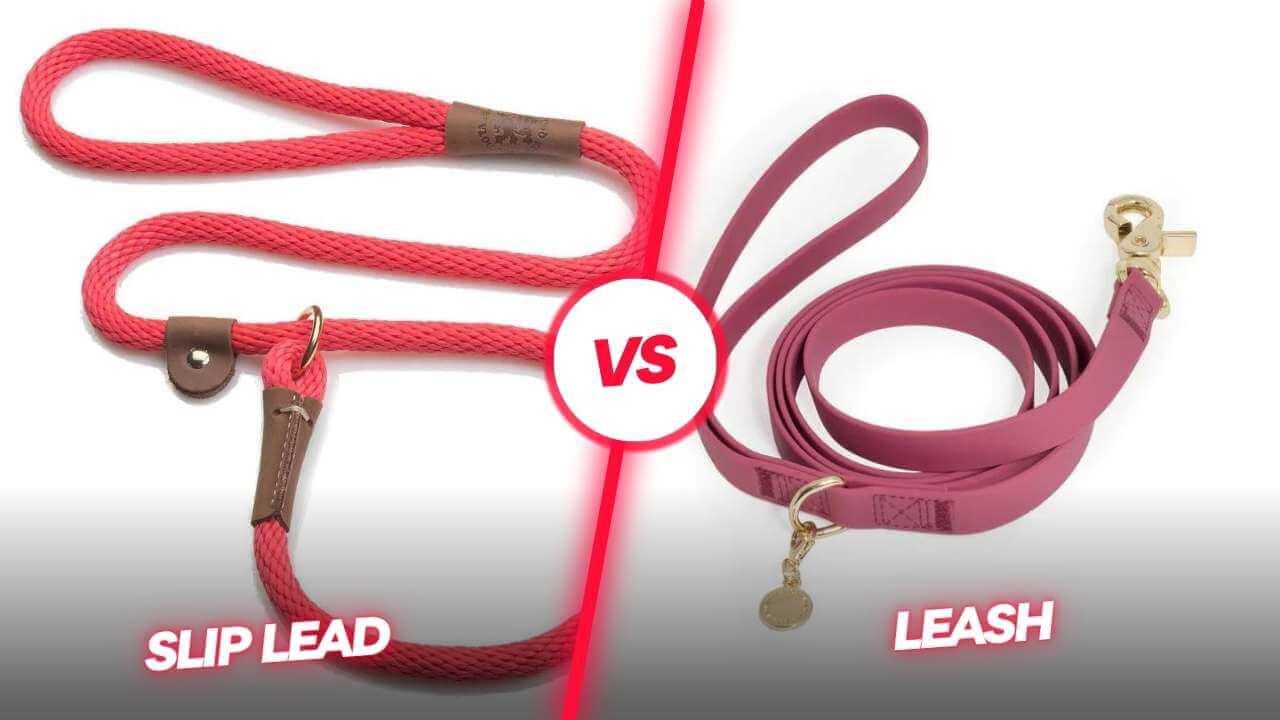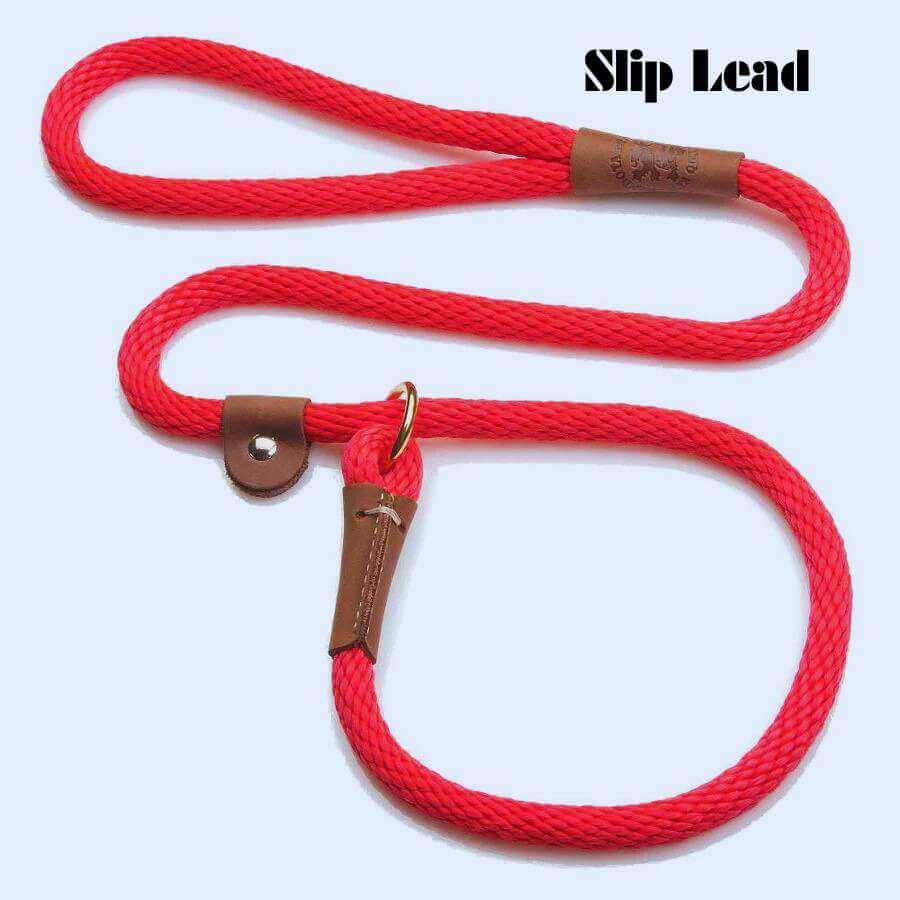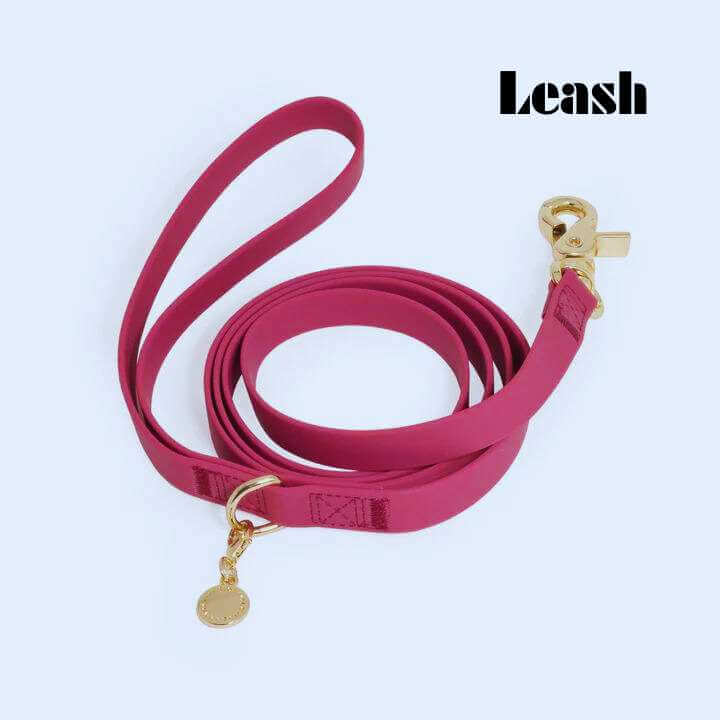Slip Lead vs Leash : Exploring the Best Walking Option for Your Dog
Are you ready to take your dog for a walk but unsure whether to choose a slip lead or a leash? The battle between slip lead vs leash has dog owners everywhere pondering the best option for their furry companions. Don’t worry; we’ve got you covered!
The basic difference between a slip lead and a leash lies in their design and functionality. A slip lead is a convenient all-in-one tool that combines a collar and leash, featuring an adjustable loop that easily slips over your dog’s head. It’s perfect for quick walks and training sessions. On the other hand, a leash consists of a separate collar and leash, offering more control and versatility. Leashes come in various materials and lengths, allowing for customization based on your dog’s needs and activities.
In this comprehensive guide, we’ll explore the unique features, pros, and cons of slip leads and leashes, helping you make an informed decision that suits both you and your beloved pup. Get ready to unleash the knowledge and discover the perfect walking companion!

what is a slip lead?
A slip lead is a versatile dog-walking tool that combines a collar and a leash into one easy-to-use design. It features an adjustable loop that fits around the dog’s neck and tightens when pulled, allowing for quick and easy control of your pup during walks or training sessions.
Slip leads are designed to provide a gentle yet effective means of controlling your dog, making them ideal for training and walking excursions. They are particularly useful for dogs who tend to pull or for those who need a bit of extra control in certain situations.
The materials used for slip leads are typically high-quality nylon, leather, or a combination of both. Nylon slip leads are lightweight, durable, and affordable, making them an excellent choice for most dogs. On the other hand, leather slip leads offer a more elegant look and feel, and they become suppler with use, making them a great investment for long-term use.

Overall, slip leads are a convenient and reliable option for dog owners who need a reliable way to control their pets while on the go. Whether you’re training a new puppy or simply taking a stroll with your four-legged friend, a slip lead can help make the experience more enjoyable and rewarding for both you and your pup.
How to use a slip lead?
The process of using a slip lead is easy once you become familiar with it! The following steps will help you use a slip lead effectively:
Using a slip lead correctly and employing positive reinforcement create a comfortable and enjoyable walking experience for you and your furry friend. The most important thing when training your pet with a slip lead is to be consistent and patient. Soon enough, you’ll be strolling together with confidence and control!
Slip lead pros and cons
A slip lead can be a convenient and effective tool for controlling your dog during walks or training sessions. However, as with any dog accessory, weighing the pros and cons is important to determine if it’s the right fit for you and your furry friend. Here is the slip leads pros and cons-
| Slip Lead Pros | Slip Lead Cons |
| Convenient all-in-one collar and leash | Limited adjustability for precise fit |
| Quick and easy to put on and remove | May not be suitable for dogs with neck injuries |
| Offers immediate control and restraint | Can slip off if not properly fitted or adjusted |
| Ideal for quick walks and training sessions | May not provide as much control as a leash |
| Lightweight and portable | Limited variety of styles and designs |
Please note that slip leads have advantages but may not be suitable for all dogs or situations. It’s important to consider your dog’s specific needs, behavior, and any potential health concerns before deciding on a slip lead as your primary walking tool.
What is a Leash?
A leash is a fundamental tool for dog owners that consists of a cord or strap, typically made of nylon or leather, attached to a handle or clip. Its purpose is to provide control and restraint during walks or other outdoor activities with a dog.
A leash serves several important functions. Firstly, it ensures the safety of both the dog and those around them by preventing them from wandering into dangerous situations or running off. Additionally, a leash allows owners to maintain control over their dog’s movement, preventing excessive pulling or unwanted interactions with other animals or people. It also provides a means for guiding and training the dog, promoting good behaviour and obedience.

Benefits of Leashes
Leashes bring a multitude of benefits to dog owners:
Slip lead vs leash Comparison
When walking and controlling your dog, choosing the right equipment is essential. Two commonly used options are slip leads and regular leashes. While both serve to keep your dog safely by your side, they differ in design, functionality, and training applications. In this comparison, we’ll examine the unique features of slip leads and leashes, helping you decide which is best suited for your dog’s needs.
Here’s a comparison table between slip leads and regular leashes, highlighting their unique features:
| Features | Slip Lead | Leash |
| Design | Combination of a leash and collar | Separate collar and leash |
| Function | Functions as both a collar and a leash | Primarily used for leash attachment |
| Adjustability | Limited adjustability | Adjustable length |
| Control | Provides firm control and quick correction | Offers control but may require additional training |
| Slip Effect | Tightens when pulled, creating a cinching effect | Maintains consistent tension |
| Training | Popular for training purposes, especially in dogs | Suitable for everyday walks and activities |
| Ease of Use | Easy to put on and take off | Requires separate collar attachment |
| Safety | Can pose a risk of injury if used incorrectly | Provides a safer and more secure connection |
| Comfort | May apply pressure on the neck | Generally designed for comfort |
| Recommended For | Dogs that pull or require additional control | Dogs with good leash manners |
Additional Information:
Remember, choosing the right tool based on your dog’s needs and preferences is important as using any training equipment responsibly and with proper instruction.
For More information
Difference between Martingale Collar and Slip Leash
| Comparison | Martingale Collar | Slip Leash |
| Design and Purpose | Designed for dogs with narrow heads | Combination of leash and collar in one |
| Control | Provides control without choking the dog | Provides control in a gentle manner |
Comparison between Choker Chain and Slip lead
| Comparison | Choker Chain | Slip Lead |
| Design and Purpose | Metal chain collar for control | Combination of leash and collar in one Gentle means of control |
| Potential Harm | Can cause harm if used improperly | Less potential harm if used properly |
Differences between Slip lead vs Harness
| Comparison | Slip Lead | Harness |
| Design and Purpose | Combination of leash and collar in one Gentle means of control | Fits around dog’s torso, distributes pulling force across chest and shoulders |
| Control | Provides control in a versatile manner | Provides control by reducing pressure on the neck and preventing choking |
| Usage | Commonly used for training, walking, and handling dogs in various situations | Suitable for dogs prone to pulling or for those needing extra support |
It’s important to note that while the information provided in the table highlights some general differences between the items, individual preferences, training needs, and the dog’s specific characteristics should be considered when selecting the appropriate equipment.
What to Consider When Choosing a Slip Lead or Leash
When choosing between a slip lead and a leash, there are several considerations to keep in mind, including the size, length, and material of the lead or leash. These factors play a crucial role in ensuring the equipment’s comfort, safety, and functionality for both you and your dog.
Size:-
Length:-
Material:-
By carefully considering the lead or leash’s size, length, and material, you can choose the most appropriate option that suits your dog’s needs and ensures a comfortable and safe walking experience.
Which is Right for You and Your Dog?
When deciding between a slip lead and a leash for you and your dog, it’s important to consider several factors, as well as your preferences and circumstances. Here are some key considerations to help you make the right choice:
The needs of each dog are unique, and what works for one may not work for another. By considering these factors, your personal preferences, and your dog’s circumstances, you can make an informed decision that promotes safety, comfort, and enjoyable walks for you and your furry companion.
Various equipment options are available for dog training and control, each serving different purposes. Understanding the differences between these tools is essential for responsible pet ownership. Below are a few key comparisons between martingale collars and slip leashes, choker chains and slip leads, and harnesses, highlighting their unique characteristics and benefits.
FAQ
What age to use a slip lead?
When using a slip lead, it’s generally recommended for dogs at least six months old and who have acquired basic leash manners. By this age, they have typically developed the necessary understanding and impulse control to respond appropriately to the pressure and cues provided by a slip lead. However, every dog is unique, so assessing your furry friend’s maturity, size, and training level is essential. Focusing on foundational training and introducing them gradually to leash and collar usage is a more suitable approach for younger puppies. Patience and proper guidance are key to ensuring a positive and successful experience with a slip lead.
What to do if your dog pulls on slip lead?
If your dog pulls on a slip lead, try using the “stop and wait” technique. When your dog pulls, immediately stop walking and stand still. Hold the leash firmly without pulling back. Wait patiently until your dog relaxes and releases tension on the lead. Once your dog calms down, resume walking. As you walk alongside your dog, the method teaches them that pulling won’t get them anywhere. In order to achieve leash manners, focus on consistency and positive reinforcement.
Does a slip lead hurt a dog?
When used correctly, a slip lead should not hurt a dog. It is designed to provide gentle control without causing harm. The slip lead tightens slightly when tension is applied, signalling the dog to ease up. However, ensuring the slip lead is properly fitted and not overly tight is crucial to avoid discomfort. In addition, you can teach your dog to associate positive experiences with the slip lead by using positive reinforcement techniques.
Conclusion:-
Both options have advantages in the “slip lead vs leash” debate. The slip lead offers the convenience of a leash and collar in one, providing gentle control, while the traditional leash offers familiarity and versatility for various training and walking situations. Remember, choosing the right equipment is important, but what truly matters is the bond and communication you develop with your furry companion through consistent training and positive reinforcement.
So, find the perfect fit for your dog’s needs and walking style, and embark on enjoyable adventures together, fostering a stronger connection.


